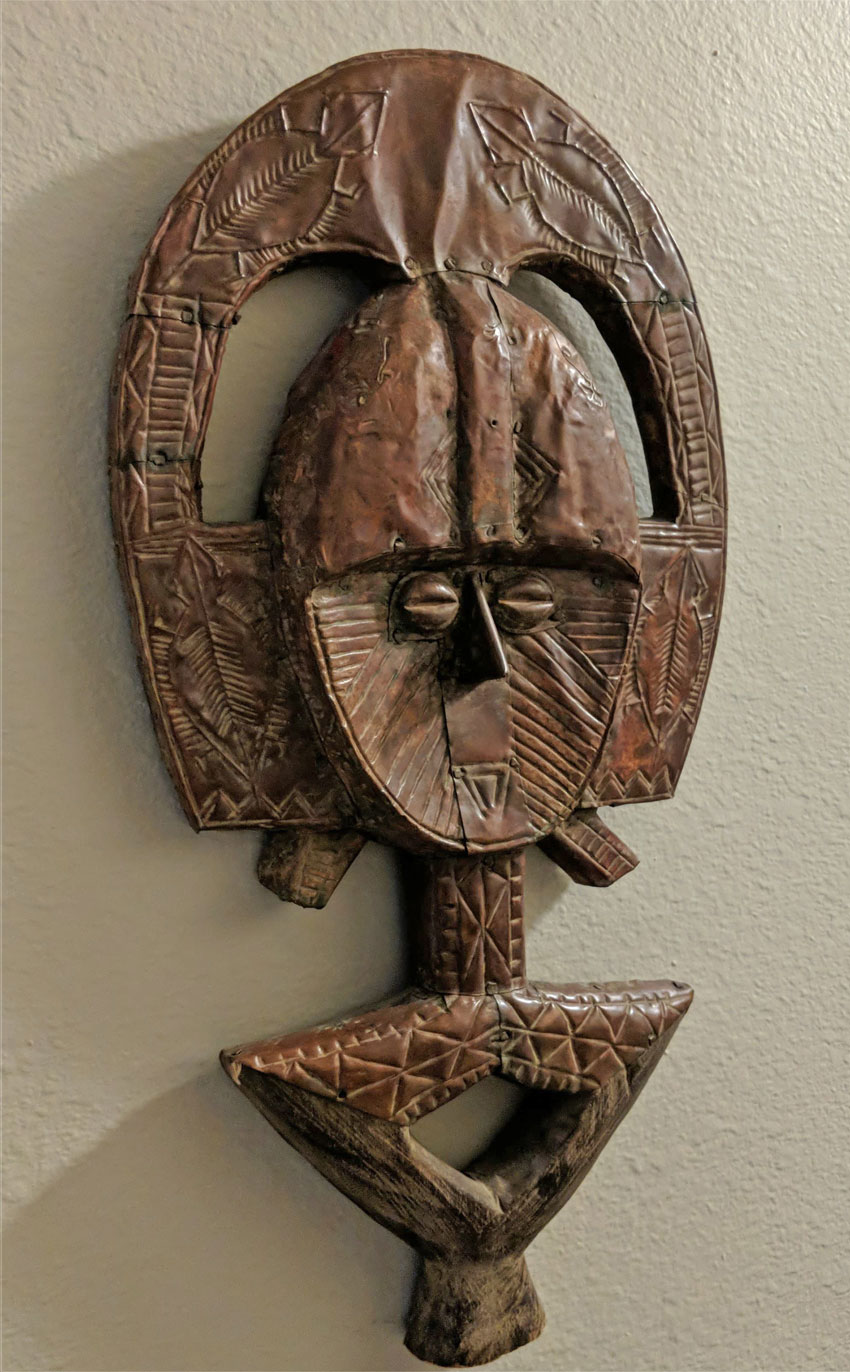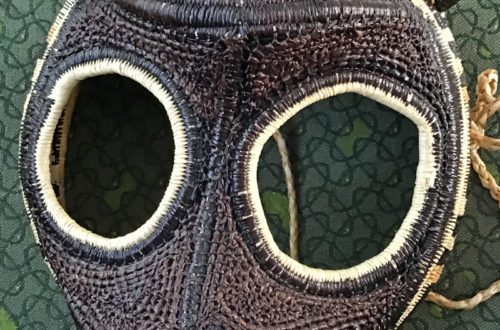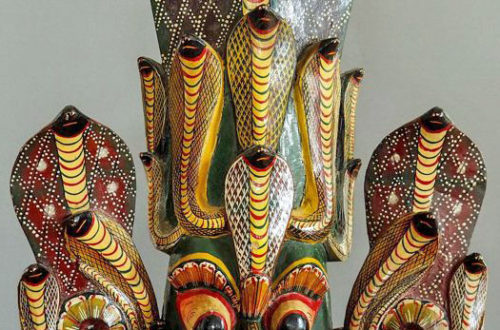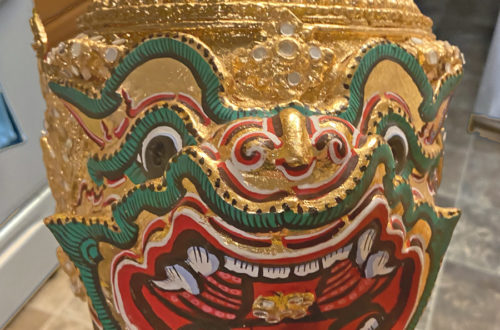 Q: I am curious about this. I won it at a raffle in Washington DC and was told that someone in the state department had brought it back from, generically, Africa. Any information? Natasha, 1562
Q: I am curious about this. I won it at a raffle in Washington DC and was told that someone in the state department had brought it back from, generically, Africa. Any information? Natasha, 1562
A: This is not a mask. It is an almost flat, sculpted portrait that seems to show up in African mask collections because of its unique appearance and beauty. They vary in size, but always follow the same format. Sizes can range from 6 inches 3 feet. This one is 21 inches. They are made with a combination of wood and hammered metal.
The Kota once used reliquary guardian figures (called mbulu ngulu) to protect the revered bones of family ancestors. The bones were preserved in containers made of bark or basketry. The mbulu ngulu stood atop this bundle, bound to it at the figure’s lozenge-shaped base.
The Kota (or Bakota) tribe are located in the northeastern region of Gabon. Ancestor worship formed the core of the family group’s religious and social life. At the death of a chief, the initiates would take from the body of the deceased various relics, which were then decorated with metal and rubbed with powders of multiple magical powers.
These statues stood guard in cylindrical bark boxes, on baskets or bundles called bwete that contained the skulls and bones of important ancestors. Bound into a packet and lashed to the base of a carved figure, the bones formed a stable base that allowed the image to stand more or less upright.
The reliquaries were kept outside the homes, in huts at the edge of the village. Only the initiates of the lineage had access to this sacred place. At the time of initiation in the reliquary cult, the clans would meet to perform communal rituals; each clan’s chief would dance holding the reliquary. Some reliquaries featured a large figure representing the lineage founder along with some smaller figures representing his successors.
Reliquary sculpture of central Africa has been rightfully considered to occupy the very summit of African creativity. Kota reliquary figures, in particular, have become icons of world art, and are today instantly familiar to Western viewers. B+






One Comment
Troy
I also have one around 3′ tall, very old,.